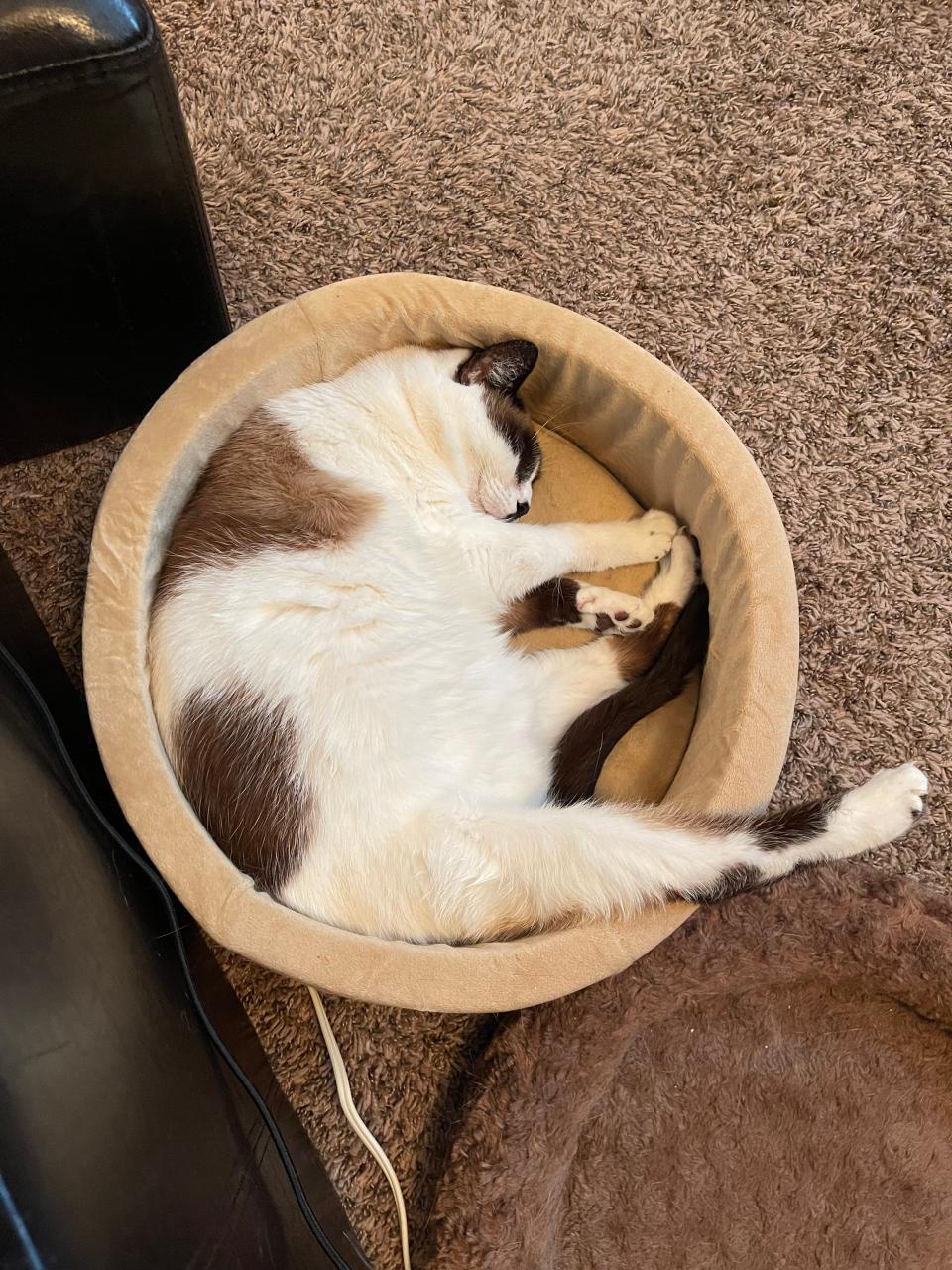Can cats smile? Yes, but not in the way you'd expect. Here's what they're trying to tell you.
You’ve heard the stereotypes: Dogs are loyal to their owners, and cats generally couldn’t care less about them.
But this is wrong. Studies have found cats form attachments to human caregivers similarly to dogs and even children. Our cats do, in fact, love us.
The two pets certainly have different ways of showing it, however. Dogs wag their tails and lick our faces to show they’re happy to see us. We also know they smile to greet us.
So how do cats express happiness? Here’s what a specialist has to say.
Do cats smile?
Cats do smile, but not in the way that humans do – while we bare a grin to show our happiness, cats smile with their eyes, says Marci Koski, a feline behavior and training consultant. Cats smile by narrowing their eyes, shutting them partly or completely. Their pupils may also be dilated while doing this.
Humans by nature are more expressive, using the muscles in our faces to express happiness, disgust, anger, excitement and other emotions.
“Cats don’t have that range of facial expressions,” Koski says. “They evolved in an area or areas that were relatively resource-limited, so their territories were very large and close-up interactions between cats were fairly limited.”
Instead, cats use exaggerated body movements or expressions to show similar emotions. This could be hissing, growling, putting their ears back or to the side, puffing up their bodies or twitching their tails.
Smiling with their eyes is a more subtle expression, but it’s one they do with their humans and other cats alike. Two of Koski’s cats, who are mother and son, show this behavior – the son, Oliver, will only approach his mom to snuggle when she appears relaxed, with her eyes nearly closed.
“Other cats interpret those eye signaling as an indicator of how the cat is feeling,” Koski says.

One thing they won’t do is share an open-mouth, toothy smile. Cats only show their teeth when they’re feeling threatened, fearful or trying to defend themselves, so be careful not to mistake that for happiness.
“They’ll really only show their teeth if they’re hissing or spitting,” Koski says. “Their (small baby teeth) are super, super adorable, but if you see those teeth it’s not a good sign because you’re going to see the big canine teeth as well.”
What does catnip do to cats?: The science of your cat’s favorite treat explained
How do you know if a cat is happy?
Cats’ eyes may be the most expressive, but there are facial cues to look for in your pet.
“They can move their muscles in their face, but the results are a lot more subtle than what we see in humans and dogs,” she says. “If you look closely in a stressed cat or a cat who’s in pain, you might see the furrowing of the brow or the whiskers can be held in certain positions.”
You can also tell if a cat is happy by their body language. If they’re laying on their side with their tummy exposed, they’re content. Their tail will be loosely positioned around their body – a tightly wrapped tail indicates stress. They may also be doing what’s called a “solicitation purr,” or a sound that triggers their humans to give them food or love.
How to make your cat happy
The best way to make your cat happy is to play with them, Koski says. As a pet owner, you should also try to see the world from your cat’s point of view: one as the predator and the prey.
Koski recommends two 10-15 minute play sessions per day, using a wand toy to let your cat become the predator while the toy is the prey.
“It makes them so happy because it gives them an opportunity to express those natural instincts and it helps them reduce stress, reduce boredom and it’s a great opportunity to bond with your cat,” Koski says.
Your cat will also likely be happier if their playtime coincides with their natural instincts to hunt at dusk and dawn. Try setting a morning and night routine.
“Follow up that play session with a little snack or a meal because then that will initiate the hunt-eat-groom-sleep sequence,” Koski says.
We all want to smother our pets with love and affection, but sometimes cats are happiest when they’re alone. To accommodate this, make sure they have plenty of spaces to hide where they can observe from afar. Koski calls these “looky, no touchy zones,” and they can be especially important if you have young children or dogs in the house who may not respect your feline friend’s personal space.
Koski says owners shouldn’t hesitate to ask for help from a vet or behavioral specialist if they’re concerned about their cat’s behavior.
“If you have any little red flags that are popping up in your head, don’t ignore those,” Koski says.
Why do cats sleep so much?: Understanding your pet's sleeping patterns
Just Curious for more? We've got you covered
USA TODAY is exploring the questions you and others ask every day. From "When do cats stop growing?" to "What colors can dogs see?" to "Can cats eat dog food?" – we're striving to find answers to the most common questions you ask every day. Head to our Just Curious section to see what else we can answer for you.
This article originally appeared on USA TODAY: Do cats smile? What they're trying to tell you and how to make them happy.
